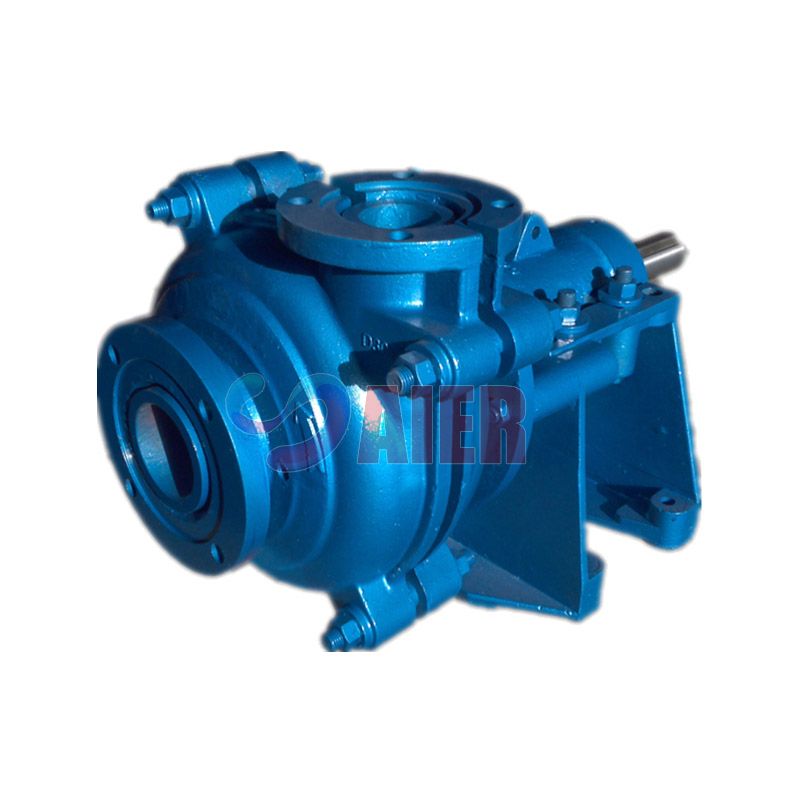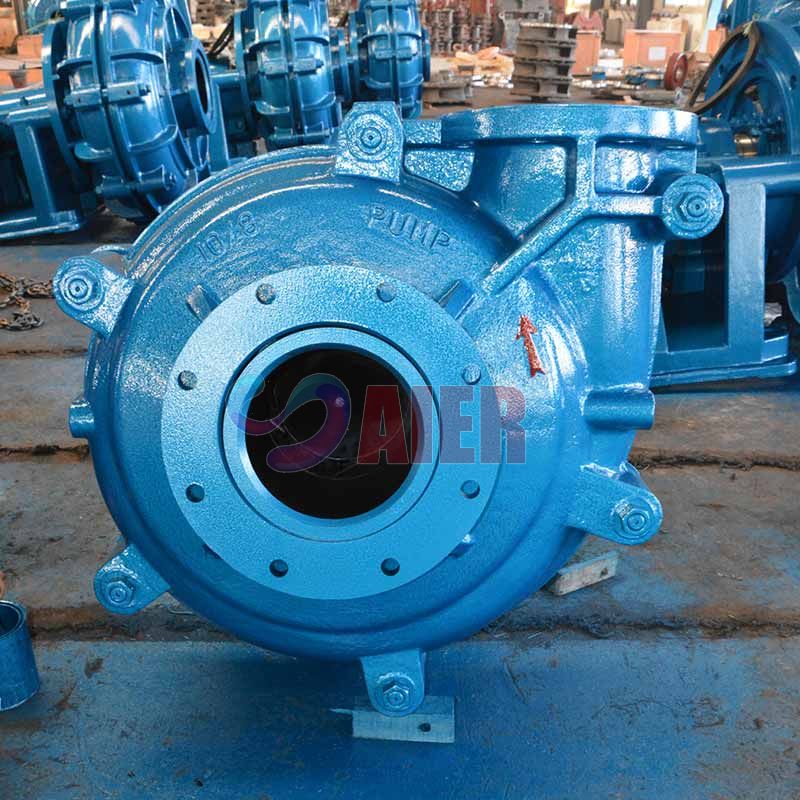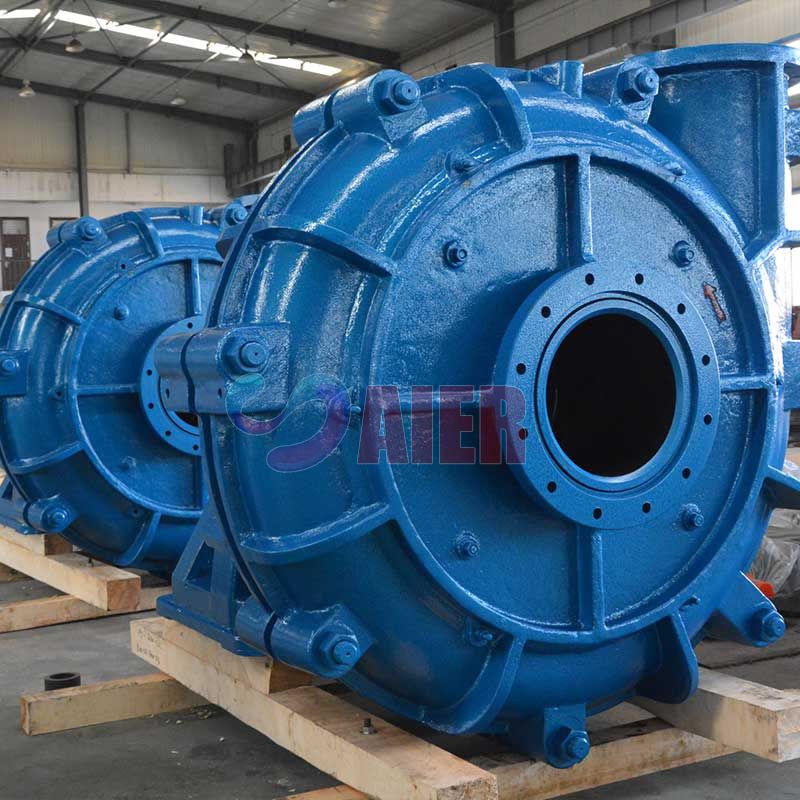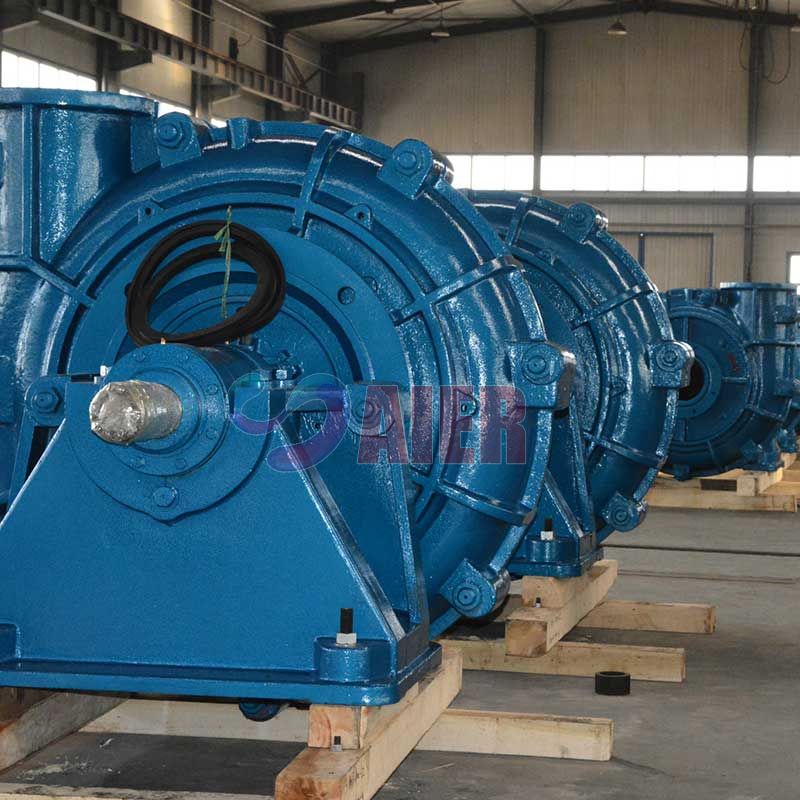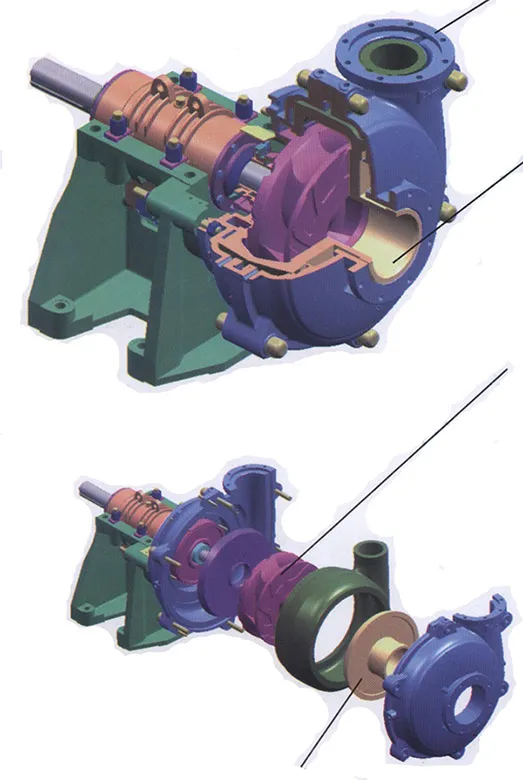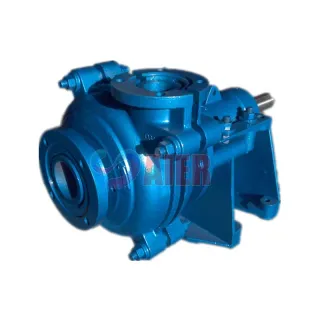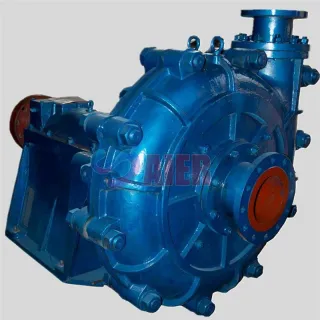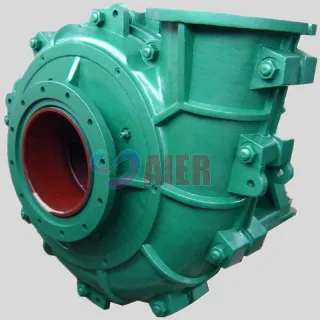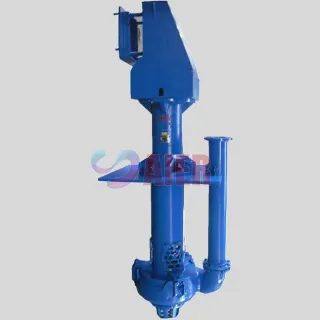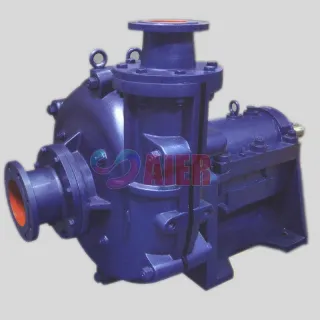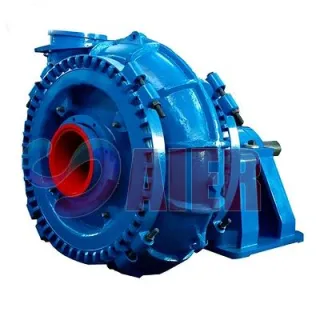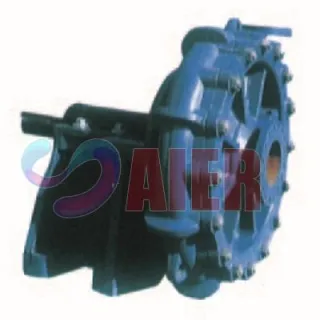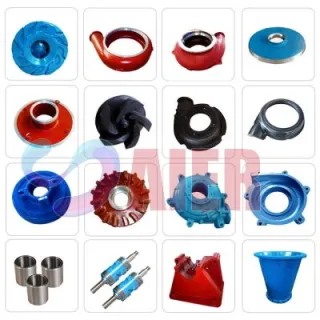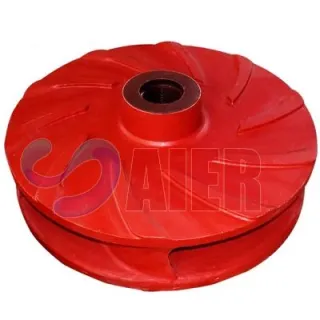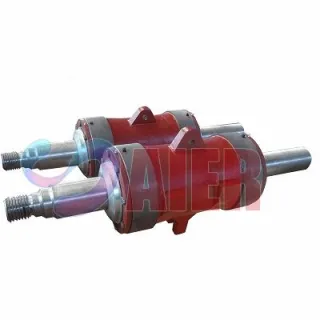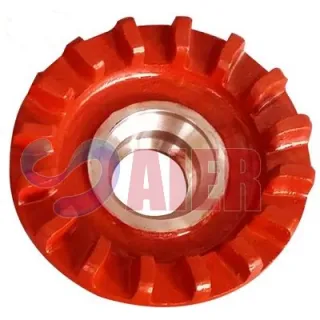Pam Slurry Tugas Berat WA
Apakah pam buburan tugas berat?
Pam buburan tugas berat siri WA adalah julur, mendatar, getah asli atau dialas logam keras pam buburan empar. Ia direka untuk mengendalikan buburan ketumpatan tinggi yang melelas dalam metalurgi, perlombongan, arang batu, kuasa, bahan binaan dan jabatan industri lain.
Spesifikasi pam tugas berat
Saiz: 1" hingga 22"
Kapasiti: 3.6-5400 m3/j
Kepala: 6-125 m
Pepejal menyerahkan: 0-130mm
Kepekatan: 0%-70%
Bahan: aloi krom hiper, Getah, Poliuretana, Seramik, Keluli tahan karat dll.
AIER® WA Heavy Duty Slurry Pump
Ciri-ciri pam buburan
1. Plat rangka untuk pam siri WA mempunyai pelapik elastomer logam keras yang boleh ditukar ganti atau acuan tekanan. Pendesak diperbuat daripada logam keras atau pelapik elastomer acuan tekanan.
2. Pengedap aci untuk siri WA boleh menjadi meterai pembungkusan, meterai emparan atau meterai mekanikal.
3. Cawangan pelepasan boleh diletakkan pada selang 45 darjah mengikut permintaan dan berorientasikan kepada mana-mana lapan kedudukan untuk disesuaikan dengan pemasangan dan aplikasi. Terdapat banyak mod pemacu untuk pilihan, seperti tali pinggang V, gandingan fleksibel, kotak gear, frekuensi berubah-ubah pengganding hidraulik, kelajuan terkawal silikon, dan lain-lain. Antaranya, pemacu gandingan aci fleksibel dan ciri tali pinggang V kos rendah dan pemasangan mudah.
4. In harsh conditions with sand, sludge, rocks and mud, ordinary slurry pumps tend to clog, wear and fail frequently.. But our heavy-duty slurry pumps are highly resistant to wear and corrosion, which means that the hayat perkhidmatan pam buburan kami adalah lebih baik daripada pam pengeluar lain.
Pam tugas berat aplikasi biasa
Oleh kerana pam buburan tugas berat WA kami sangat tahan haus dan kakisan, pam tugas berat digunakan dalam pelbagai aplikasi.
1. Nyahcas kilang SAG, nyahcas kilang bebola, nyahcas Rod mil.
2. Buburan asid Ni, pasir kasar, tailing kasar, matriks fosfat, pekat mineral.
3. Media berat, bit gula, pengorekan, abu dasar/terbang, pengisaran kapur, pasir minyak, pasir mineral, tailing halus, granulasi sanga, asid fosforik, arang batu, pengapungan, kimia proses, pulpa dan kertas, FGD, suapan siklon, dsb. .
Notasi pam
| 200WA-ST: | 100WAJ-D: |
| 200: Diameter alur keluar: mm | 100: Diameter alur keluar: mm |
| WA: Jenis pam: berlapik aloi krom | WAJ: Jenis pam: berlapik getah |
| ST: Jenis plat bingkai | D: Jenis plat bingkai |
Untuk mengetahui cara menyelesaikan masalah mengepam anda, hubungi Kami today! We are the slurry pump manufacturer that can help you solve your problems.
Reka Bentuk Pembinaan
|
|
Selongsong Bahagian selongsong terbelah daripada besi tuang atau mulur mengandungi pelapik haus dan memberikan keupayaan tekanan operasi yang tinggi.
Pelapik logam keras yang boleh ditukar dan acuan elastomer |
|
Pendesak Pendesak mungkin sama ada elastomer acuan atau logam keras. Bim pengedap sisi dalam melegakan tekanan pengedap dan meminimumkan peredaran semula. Benang pendesak tuang masuk lebih sesuai untuk buburan. |
Mating faces in hard metal liners are tapered to allow positive alignment during assembly and allow components to be easily removed for replacement.
Bahan Bahagian Pam
| Nama Bahagian | bahan | Spesifikasi | HRC | Permohonan | Kod OEM |
| Pelapik & Pendesak | logam | AB27: 23%-30% besi putih krom | ≥56 | Digunakan untuk keadaan haus yang lebih tinggi dengan pH antara 5 dan 12 | A05 |
| AB15: 14%-18% besi putih krom | ≥59 | Digunakan untuk keadaan haus yang lebih tinggi | A07 | ||
| AB29: 27%-29% besi putih krom | 43 | Digunakan untuk keadaan pH yang lebih rendah terutamanya untuk FGD. Ia juga boleh digunakan untuk keadaan masam rendah dan pemasangan desulfurasi dengan pH tidak kurang daripada 4 | A49 | ||
| AB33: 33%-37% besi putih krom | Ia boleh mengangkut buburan beroksigen dengan pH tidak kurang daripada 1 seperti phospor-plaster, asid nitrik, vitriol, fosfat dll. | A33 | |||
| Getah | R08 | ||||
| R26 | |||||
| R33 | |||||
| R55 | |||||
| Cincin pengusir & pengusir | logam | B27: 23%-30% besi putih krom | ≥56 | Digunakan untuk keadaan haus yang lebih tinggi dengan pH antara 5 dan 12 | A05 |
| Besi kelabu | G01 | ||||
| Kotak Sumbat | logam | AB27: 23%-30% besi putih krom | ≥56 | Digunakan untuk keadaan haus yang lebih tinggi dengan pH antara 5 dan 12 | A05 |
| Besi kelabu | G01 | ||||
| Rangka/Plat penutup, rumah galas & tapak | logam | Besi kelabu | G01 | ||
| Besi mulur | D21 | ||||
| Aci | logam | Keluli karbon | E05 | ||
| Lengan aci, cincin tanglung/penyekat, cincin leher, bolt kelenjar | Keluli tahan karat | 4Cr13 | C21 | ||
| 304 SS | C22 | ||||
| 316 SS | C23 | ||||
| Cincin & pengedap sendi | Getah | Butil | S21 | ||
| Getah EPDM | S01 | ||||
| Nitril | S10 | ||||
| Hypalon | S31 | ||||
| Neoprena | S44/S42 | ||||
| Viton | S50 |
Reka Bentuk Modul Penghantaran
|
Aci pam diameter besar, silinder Pembinaan beban berat, galas metrik menggunakan pelinciran minyak atau pelinciran gris; dibuka secara bersiri, ciri pembinaan volum kecil dan kebolehpercayaan yang tinggi. |
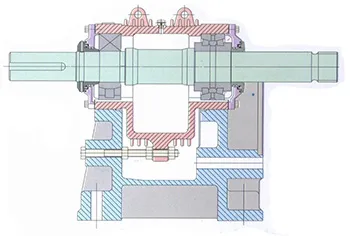 |
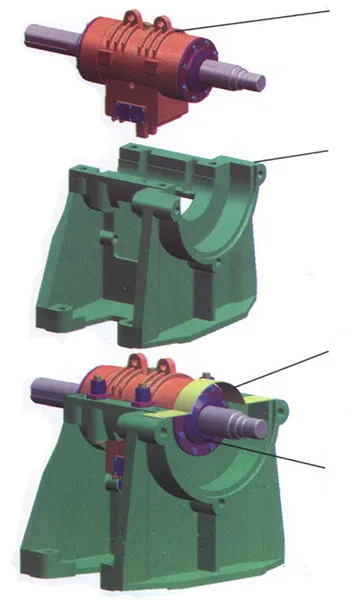 |
Perhimpunan Galas Aci Aci berdiameter besar dengan overhang pendek meminimumkan pesongan dan getaran. Galas roller tugas berat ditempatkan dalam kartrij galas boleh tanggal. Pangkalan Pam Kencangkan pam di pangkalan dengan bilangan bolt minimum dan laraskan pendesak dalam kedudukan yang mudah di bawah perumah galas. Penutup kalis air menghalang kebocoran air daripada terbang. Penutup perlindungan menghalang kebocoran air daripada pendakap galas.
|
Reka Bentuk Modul Pengedap Aci
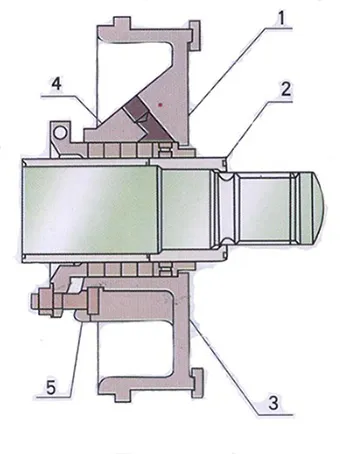 |
1. Kotak Pembungkusan 2. Cincin Tanglung Depan 3. Pembungkusan 4. Kelenjar Pembungkusan 5. Lengan Aci |
|
1. Kelenjar Pelepasan 2. Pengusir 3. Pembungkusan 4. Gasket Pembungkusan 5. Cincin Tanglung 6. Kelenjar Pembungkusan 7. Cawan Minyak |
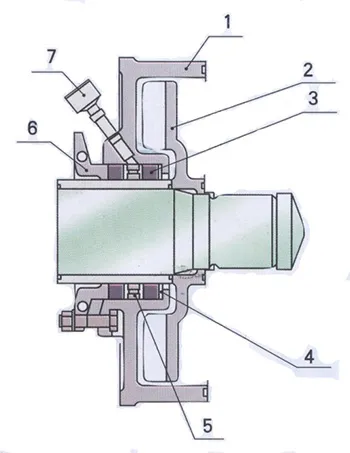 |
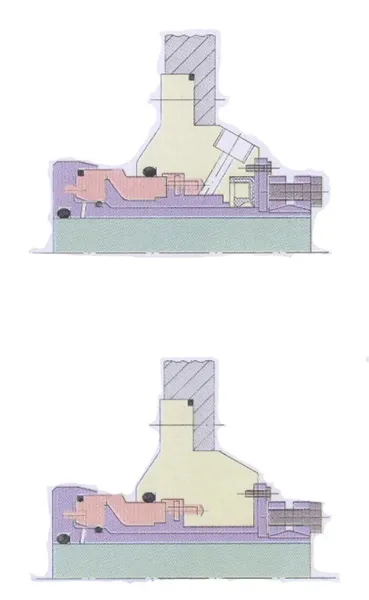 |
Meterai Mekanikal GRJ Jenis GRG digunakan untuk cecair yang tidak dibenarkan dicairkan. Meterai Mekanikal HRJ Jenis HRJ digunakan untuk cecair yang dibenarkan cair. Seramik dan sekutu kekerasan tinggi digunakan untuk bahan bahagian geseran. Ia mempunyai rintangan lelasan yang tinggi & kalis goncang untuk menjamin bahawa kesan pengedap boleh dipenuhi oleh pelanggan dalam pelbagai keadaan.
|
Keluk Prestasi
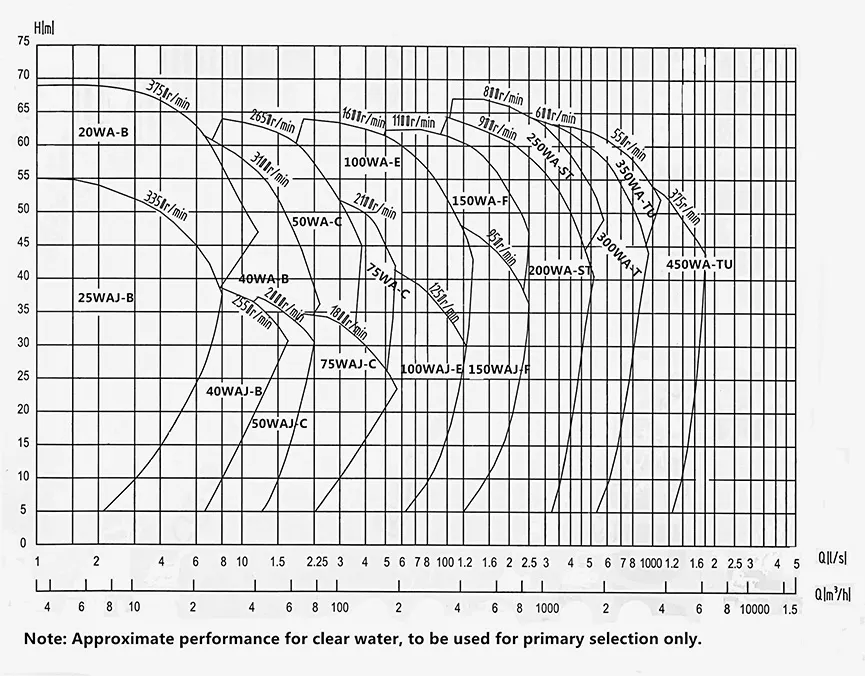
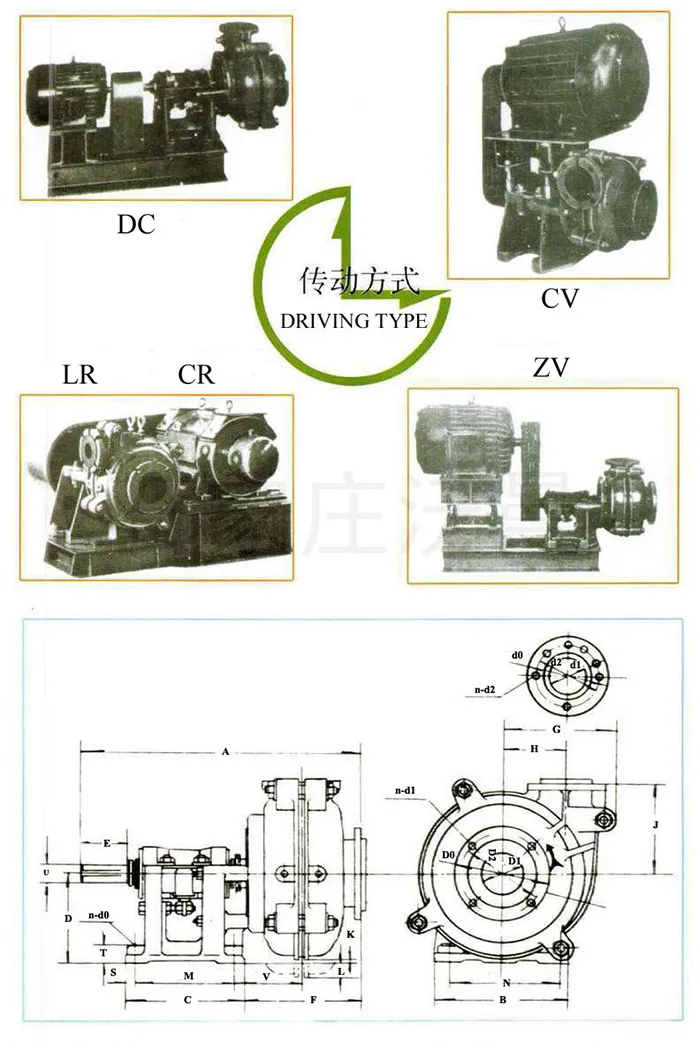
Dimensi Pemasangan
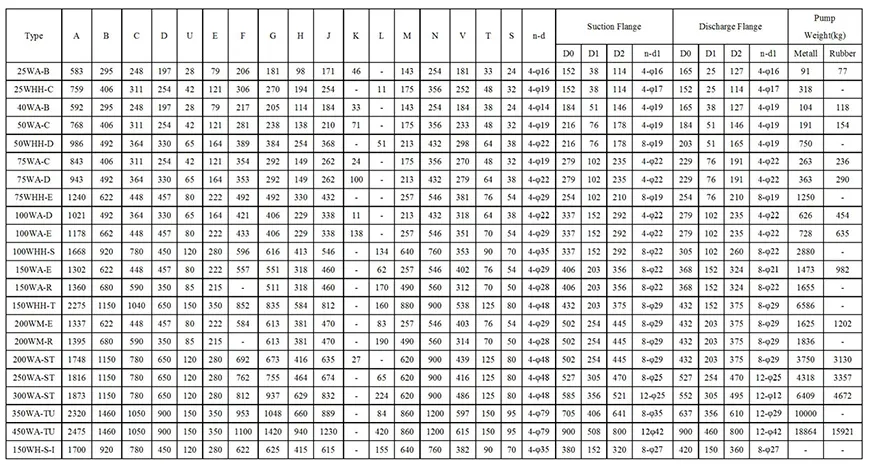
Pemilihan Pendesak Pam Buburan
Slurry pump impeller is one of the most important parts of centrifugal slurry pumps. Depending on the application, slurry pump impeller selection is crucial to slurry pump performance. Slurry applications can be especially hard on the impeller of slurry pumps because of their abrasive nature. In order slurry pumps operates efficiently and stand up to the test of time, impeller has to be selected properly for slurry pumps.
1. Jenis Pendesak Pam Buburan
Terdapat tiga jenis pendesak pam buburan yang berbeza; terbuka, tertutup dan separuh terbuka. Masing-masing mempunyai kekuatan dan kelemahan sendiri, bergantung pada aplikasi. Ada yang lebih baik untuk pengendalian pepejal, yang lain lebih baik untuk kecekapan tinggi.
Any type of impeller can be used in slurry applications, but closed slurry pump impellers are more common because they are high efficient and abrasion Resistance,. Open slurry pump impellers are usually used well for high concentration solids as they are less likely to clog. For example, the small fibers in paper stock which, in high densities, may have a tendency to clog the impeller. Pumping slurry can be difficult.
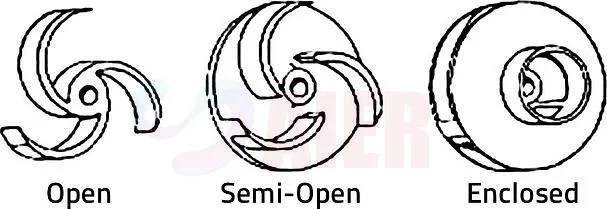
2. Saiz Pendesak Pam Buburan
The size of slurry pump impeller must be considered to ensure it holds up against abrasive wear. Slurry pump impellers are generally larger in size when compared to slurry pumps for less abrasive liquids. The more “meat” the impeller has, the better it will hold up to the task of pumping harsh slurry mixtures. Just think of slurry pump impeller as a football team’s offensive line. These players are usually large and slow. Throughout the whole game they are beaten up, over and over again, but expected to withstand the abuse. You wouldn’t want small players in this position, just like you wouldn’t want a small impeller on your slurry pumps.
3. Kelajuan Pam Lumpur
Process speed doesn’t have anything to do with choosing slurry pump impeller, but it does have an effect on the life of slurry pump impeller. It is important to find the sweet spot that allows the slurry pump to run as slow as possible, but fast enough to keep solids from settling and clogging. If pumping too fast, the slurry can quickly erode the impeller due to its abrasive nature. This is why it is important to select a larger impeller if possible.
When dealing with slurry, you generally want to go bigger and slower. The thicker the impeller, the better it will hold up. The slower the pump, the less erosion will inflict on the impeller. However, the impeller isn’t the only thing to worry in slurry pump when dealing with slurry. Tough, durable materials of construction are necessary most of the time. Metal slurry pump liners and wear plates are common in slurry applications.
Pemasangan Pam Slurry
Pemasangan Pam Slurry Mendatar
The mounting and installation of horizontal slurry pumps are generally subject to a number of considerations, including floor space, overhead space for lifting and the likelihood of flooding from spills. Pumps in critical services are often paired in duty/standby mode so that maintenance can be carried out on one pump while the other is running.
Large slurry pumps with high-energy motors - and perhaps with speed reduction gearboxes - would generally be mounted with the shaft axes in the same horizontal plane for ease of maintenance access.
A slurry pump with a belt drive may have the motor mounted beside it if there is sufficient floor space. However, if floor space is limited or there is a risk of flooding, the motor can be mounted above it either directly overhead (also known as “C drive”) or to its rear (reverse overhead mounting or “Z drive”).
Vertical Slurry Pump Installation
Vertical cantilever shaft sump pumps should be selected so that the suction inlet is close to the sump floor. If shaft length is limited by the required running speed and power to be transmitted, a suction pipe (generally two meters long) may be fitted to the suction branch to ensure the sump can be emptied.

